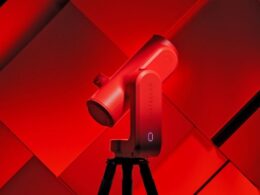The Rise of Robotic Vacuum Cleaners
Robotic vacuum cleaners have become a popular household device in recent years. Back in 2002, iRobot’s Roomba revolutionized the industry by introducing a vacuum that could autonomously clean a home. Since then, other brands like Dyson and Anker have joined the market with their own robotic vacuum cleaners.
“Roomba” has become a widely recognized brand name, and many other brands have entered the market with competing products. Despite the advancements, there is still room for disruption and innovation in the high-end segment.
The Birth of Matic: Reinventing the Cleaning Space
New player Matic aims to reinvent the cleaning and indoor robotics space with its combination robot vacuum cleaner and mop product. Co-founder Mehul Nariyawala, formerly of Google’s Nest division, believes that current robotic vacuum cleaners are lacking in intelligence and sophistication.
“We wanted ‘Rosey the Robot’ [from The Jetsons] and all we got were these disc robots that are bumbling around,” says Nariyawala. With nearly $30 million in funding from Nest, Stripe, and GitHub, Matic is set to bring a more advanced and intelligent home robot to the market.
Matic’s approach is to go back to first principles and focus on solving the key challenges of simultaneous localization and mapping (SLAM) and perception in indoor robotics. While other companies are primarily focused on building sensors and actuators, Matic believes that the real bottleneck lies in the algorithms and software.
To tackle this problem, Matic utilizes its expertise in computer vision. By leveraging 3D perception and SLAM algorithms, Matic’s robotic vacuum cleaner can navigate a home more accurately. This algorithmic-first approach sets Matic apart from its competitors who rely on alternative sensing technologies.
Another key differentiator for Matic is its privacy-focused design. Unlike other robots that heavily rely on cloud connectivity, Matic’s robot performs all processing and learning on-device. This approach ensures user privacy and reduces latency in decision-making.
Additionally, Matic’s robot is designed to continuously learn and improve over time. By cleaning floors repeatedly, the robot builds a mental map of its environment and becomes more precise with each cleaning cycle. This self-supervised learning capability sets Matic’s product apart from existing robotic vacuum cleaners that often fail to adapt to changing environments.










